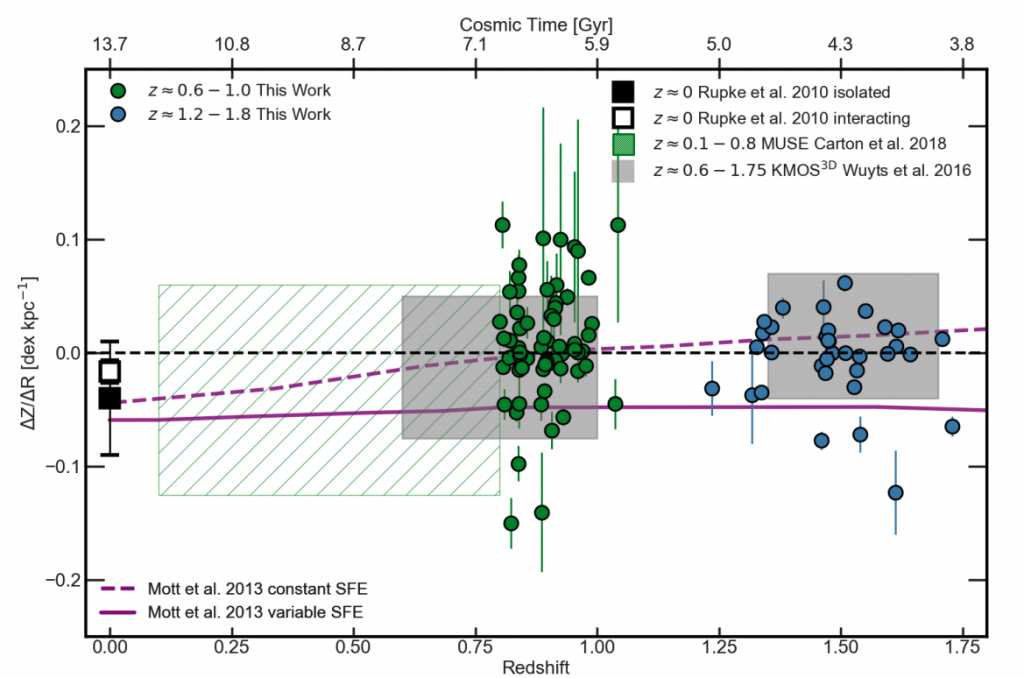The Evolution of Gas-Phase Metallicity and Resolved Abundances in Star-forming Galaxies at z ~ 0.6 – 1.8 by S. Gillman, A. L. Tiley, A. M. Swinbank, U. Dudzeviciute, R. M. Sharples, Ian Smail, C. M. Harrison, Andrew J. Bunker, Georgios E. Magdis, J. Trevor Mendel and John P. Stott, accepted October 2020
The technique of integral field spectroscopy allows us to spatially-resolve the gas properties of individual galaxies. This is because we get a spectrum at every spatial pixel of the galaxy. By measuring the abundance of heavy elements (e.g., Nitrogen) compared to Hydrogen, the so-called “metallicity” we can learn about the star formation processes of the galaxies. Star formation inside a galaxy will enrich the gas with heavy elements (e.g., through supernovae and stellar winds) and will increase the “metallicity”. Strong star formation driven winds and supernova will distribute metals across the galaxy. In contrast, “pristine” material (mostly hydrogen) can also be accreted onto the galaxy through gas inflows. Consequently a lot can be learn by measuring the metallicity gradient inside individual galaxies we can learn about the distribution of star formation and the relevance of gas inflows.
Newcastle’s Chris Harrison is part of a team using extensive integral field spectroscopy from KMOS to study galaxies at the “cosmic noon” i.e., redshift z~1-2 when cosmic star formation was at its highest levels (KROSS, KGES and KURVS surveys). This paper uses these data to measure the galaxy-wide metallicity and metallicity gradients of ~650 star-forming galaxies at z~0.6 – 1.8. We find that for a given stellar mass, more highly star-forming, larger and irregular galaxies have lower gas-phase metallicities, which may be attributable to their lower surface mass densities and the higher gas fractions of irregular systems. Galaxies in our sample exhibit flatter metallicity gradients than local star-forming galaxies, in agreement with numerical models in which stellar feedback plays a crucial role in redistributing metals.

